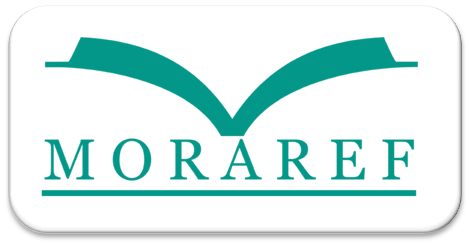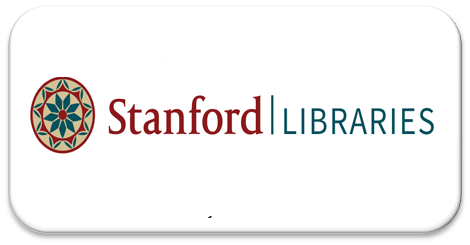Gawe Rapah sebagai Model Resolusi Konflik Berbasis Kearifan Lokal di Pulau Seribu Masjid, Lombok
DOI:
https://doi.org/10.22373/jsai.v5i3.6413Keywords:
Gawe rapah, Resolusi Konflik, Kearifan Lokal, LombokAbstract
This study aims to analyze the role of the “gawe rapah” tradition in addressing three forms of violence—direct, structural, and cultural—and to explore its contributions to peacemaking, peacekeeping, and peacebuilding within the multicultural context of Mareje Timur Village, Lombok Island. Employing a qualitative descriptive approach, the research utilizes direct observation, in-depth interviews, and document analysis. Data were analyzed using Galtung's conflict resolution theory. The findings reveal that the “gawe rapah” tradition effectively mitigates direct violence through dialogue, addresses structural inequalities by fostering social inclusion, and reduces cultural violence through tolerance education. Additionally, the tradition contributes to maintaining social stability (peacekeeping) and fostering long-term harmony (peacebuilding), including integration into formal education and the utilization of digital technology. This study underscores the relevance of the “gawe rapah” tradition as a conflict resolution mechanism rooted in local wisdom and highlights its potential to serve as an inclusive and sustainable model for conflict resolution in other multicultural contexts.
Abstrak
Penelitian ini bertujuan untuk menganalisis peran tradisi “gawe rapah” dalam mengatasi tiga bentuk kekerasan—langsung, struktural, dan budaya—serta mengeksplorasi kontribusinya pada peacemaking, peacekeeping, dan peacebuilding dalam konteks masyarakat multikultural di Desa Mareje Timur, Pulau Lombok. Penelitian ini menggunakan pendekatan kualitatif deskriptif dengan observasi langsung, wawancara mendalam, dan analisis dokumen. Data dianalisis menggunakan teori resolusi konflik Johan Galtung. Hasil penelitian menunjukkan bahwa tradisi “gawe rapah” efektif dalam meredakan kekerasan langsung melalui dialog, mengatasi ketimpangan struktural dengan menciptakan inklusi sosial, dan mengurangi kekerasan budaya melalui pendidikan toleransi. Tradisi ini juga berkontribusi pada menjaga stabilitas sosial (peacekeeping) dan membangun harmoni jangka panjang (peacebuilding), termasuk melalui integrasi dalam pendidikan formal dan penggunaan teknologi digital. Kajian ini menegaskan bahwa tradisi “gawe rapah” tetap relevan sebagai mekanisme resolusi konflik berbasis kearifan lokal dan memiliki potensi untuk menjadi model penyelesaian konflik yang inklusif dan berkelanjutan bagi masyarakat multikultural lainnya.
References
Anam, Fikri Khairul, and Satria Wiranata. 2024. “Gawe Rafah Tradition as Interreligious Conflict Resolution in West Lombok Regency.” Studi Multidisipliner: Jurnal Kajian Keislaman 11(1):43–56. doi: 10.24952/multidisipliner.v11i1.10687.
Ash-Shidiq, Muhammad Aulia, and Ahmad R. Pratama. 2021. “Ujaran Kebencian Di Kalangan Pengguna Media Sosial Di Indonesia : Agama Dan Pandangan Politik.” Universitas Islam Indonesia 2(1):1–11.
Fitriani, Mohamad Iwan. 2016. “Kepemimpinan Kharismatis-Transformatif Tuan Guru Dalam Perubahan Sosial Masyarakat Sasak-Lombok Melalui Pendidikan.” Al-Tahrir: Jurnal Pemikiran Islam 16(1):175. doi: 10.21154/al-tahrir.v16i1.332.
Gaffar, Abdul. 2024. “The Conflict Dynamics of Ahmadiyya Lombok: Public Services and Negative Stigma.” Jurnal Fuaduna : Jurnal Kajian Keagamaan Dan Kemasyarakatan 8(1):70–82. doi: 10.30983/Fuaduna.v8i1.8507.
Galtung, Johan. 1980. “Three Realistic Approaches to Peace.” Impact of Science on Society 26(1):103–15.
Hamdi, Saipul. 2015. “TUAN GURU, POLITIK DAN KEKERASAN-RITUAL DALAM KONFLIK NAHDLATUL WATHAN DI LOMBOK NUSA TENGGARA BARAT.” TEOLOGIA 26(2):242–69.
Insidelombok.id. 2024. “Integrasi Bau Nyale Dalam Pembelajaran: Menumbuhkan Kesadaran Budaya Dan Lingkungan Siswa.” Retrieved (https://insidelombok.id/pendidikan/integrasi-bau-nyale-dalam-pembelajaran-menumbuhkan-kesadaran-budaya-dan-lingkungan-siswa/?).
Jumarim, ed. 2012. Gawe Rapah Warga : Menilik Masa Lalu-Menata Hari Ini-Merangkai Masa Depan. Lombok Barat.
Kemenparekraf. 2022. “Alasan Mengapa Lombok Dijuluki Pulau Seribu Masjid.” 1. Retrieved (https://kemenparekraf.go.id/ragam-pariwisata/Alasan-Mengapa-Lombok-Dijuluki-Pulau-Seribu-Masjid).
Khalid, Idham, and Andi Hartik. 2022. “Gawe Rapah Untuk Mempererat Kembali Kerukunan Di Mareje Halaman All - Kompas.Com.” Kompas.Com.
Liliweri, A. 2003. Makna Budaya Dalam Komunikasi Antarbudaya. Yogyakarta: LKiS.
Populis.id. 2022. “Pembakaran Rumah Warga Desa Mareje Didasari Aksi Bela Agama?” Retrieved (https://populis.id/read20890/pembakaran-rumah-warga-desa-mareje-didasari-aksi-bela-agama).
Prayitno, Panji. 2024. “Fakta Menarik Lombok Dijuluki Kota Seribu Masjid, Begini Asal Usulnya.” Www.Liputan6.Com. Retrieved (https://www.liputan6.com/regional/read/5632045/fakta-menarik-lombok-dijuluki-kota-seribu-masjid-begini-asal-usulnya).
Rapanna, Patta. 2016. Membumikan Kearifan Lokal Menuju Kemandirian Ekonomi. edited by H. Syamsul. Makassar: CV SAH MEDIA.
Sumardi, Lalu, and Farida Hanum. 2019. “Social Mobility and New Form of Social Stratification: Study in Sasak Tribe, Indonesia.” International Journal of Scientific and Technology Research 8(10):708–12.
Times, IDN. 2024. “Keberagaman Dan Kearifan Suku Sasak, Warisan Budaya Lombok.” Retrieved (https://ntb.idntimes.com/life/education/idn-times-hyperlocal/keberagaman-dan-kearifan-suku-sasak-warisan-budaya-pulau-lombok).
Tohri, Ahmad, Zulkarnain Zulkarnain, Huldiya Syamsiar, Lalu M. Istiqlal, Abdul Rasyad, and Bambang Eka Saputra. 2023. “The Central Role of Tuan Guru in the 19th Century Social Revolution Movement in Lombok.” Khazanah Sosial 5(3):488–507. doi: 10.15575/ks.v5i3.27429.
Viqi, Ahmad. 2022. “Satgas Konflik Sosial Bertugas Selama 3 Bulan Di Mareje.” DetikBali. Retrieved (https://www.detik.com/bali/nusra/d-6083633/satgas-konflik-sosial-bertugas-selama-3-bulan-di-mareje).
Wahab, Abdul Jamil. 2015. Harmoni Di Negeri Seribu Agama. Jakarta: PT Elex Media Komputindo.
Wijanarko, Radianto. 2022. “Bersatu Kembali, Warga Mareje Berpelukan Dan Saling Memaafkan.” Kabupaten Lombok Barat.
Downloads
Published
How to Cite
Issue
Section
License
Copyright (c) 2024 Mohammad Zaenul Kamar, Casmini Casmini, Nurus Sa'adah

This work is licensed under a Creative Commons Attribution-NonCommercial-ShareAlike 4.0 International License.
- Authors retain copyright and grant the journal right of first publication with the work simultaneously licensed under an Attribution-NonCommercial-ShareAlike 4.0 International (CC BY-NC-SA 4.0) that allows others to share the work with an acknowledgment of the work's authorship and initial publication in this journal.
- Authors are able to enter into separate, additional contractual arrangements for the non-exclusive distribution of the journal's published version of the work (e.g., post it to an institutional repository or publish it in a book), with an acknowledgment of its initial publication in this journal.
- Authors are permitted and encouraged to post their work online (e.g., in institutional repositories or on their website) prior to and during the submission process, as it can lead to productive exchanges, as well as earlier and greater citation of published work.
















.png)






2.png)



